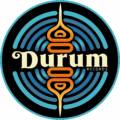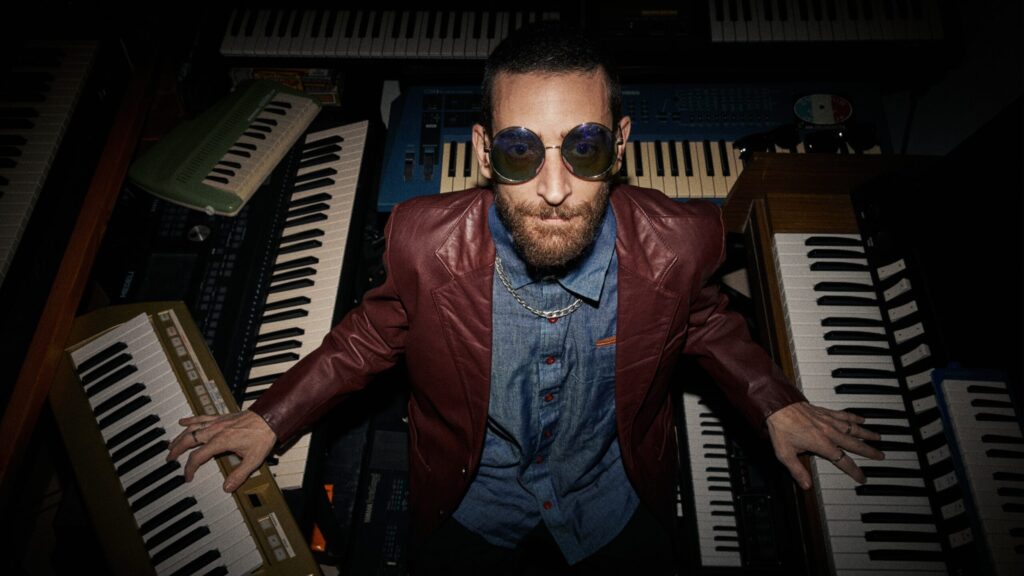Analog synth wizard Romano blends vintage grooves with deep-rooted traditions from across the Mediterranean, North Africa, and beyond. After years of traveling the world and performing with artists he once admired from afar, 2025 finally saw the release of his debut album. In this interview, he opens up about the journey behind Gule Gule, the nostalgic undercurrents in his sound, and the unique story behind every synth in his studio. We sat down with Lior Romano himself to explore the rich, cross-cultural world of a true musical nomad.
⸻
Introduction
Where does your artist name come from?
Romano is actually just my family name, I think it literally means “someone from Rome”. But from an early age, people would skip my first name (Lior) and just call me Romano. It feels natural. So when I started releasing music, I didn’t overthink it. It was already me.
How would you describe your music to someone who’s never heard it before?
It’s groove-based, but with layers of cultural influences. I once saw someone describe it as “neo-psychedelia meets easy listening,” and honestly, I can live with that. Every track is different, I don’t stick to formulas. But it’s always danceable. Each song is a journey. It starts somewhere, takes a few detours, and ends in a place you didn’t expect. I don’t like repeating myself. Every track is a new story, a different mood, a different version of me.
⸻
Roots
How has your musical identity been shaped over the years?
That’s a big question. My family history is one of migration. My ancestors were expelled from Spain in 1492, and along the way settled in North Africa and the Levant. I’m Turkish and Egyptian, but on their journey they also travelled North Africa… it’s all in me. So my roots do not stick to a particular area, it’s more like a journey. And musically, it all comes out. You’ll hear Gnawa rhythms, Turkish psychedelia, Arabic melodies. Not because I deliberately combine them, but because they live inside me. And next to my family roots, it’s also shaped by my urge to say ‘yes’. I’ve played in salsa bands, Brazilian batucadas, Ethiopian projects, minimal techno crews, reggae and ska groups… I even toured Jamaica and Ethiopia. Often someone would just say, “Hey, I need a keyboard player for this style,” and I’d say, “Sure, I’ll do it.” That’s how I picked up so many influences not because I planned it, but because life threw them my way.
What influenced your album Gule Gule and how did it come together?
First of all, Gule Gule means “goodbye” in Turkish, and for me it felt like closing a chapter. After years of performing non-stop in Israel and abroad, I reached a point of exhaustion, not just physically but emotionally. I subconsciously decided to step back from touring and focus on recording instead. Friends kept asking what was happening with my music, and I didn’t have an answer. Then Doron from Batov Records – you might know him as DJ Kobayashi – gave me the push I needed: “I’m saving you a slot for an album next year. Start working.” That belief and structure was exactly what I needed to finally bring Gule Gule to life. Each track on the album became a little stop along my journey as a musician: one inspired by funk, another by Balkan grooves, another by Ethiopian rhythms and together they form a sonic map of my past decade.
You collaborated with some great musicians on Gule Gule. How did those come about?
I invited them! I had never met Rotem Bahar (Satellites) or Uriah Witztum (Yuz) before, but I admired their work. I reached out and asked if they wanted to be part of the project, and to my surprise, they both said yes. Rotem, for example, is a powerhouse not just a vocalist, but also a pianist and flutist. She added textures I hadn’t even thought of. That’s the beauty of collaboration: people bring things to the table that you didn’t even know were missing.
Your known for your vintage keyboards, why do you love them so much?
I’m obsessed with old gear. My studio is full of keyboards from the ’60s, ’70s and ’80s. I love the touch. I love the smell. The technology is not the same anymore. These instruments have character. I once found a keyboard in a second-hand store in Berlin, and took it on the plane with me like a baby. Every synth I own has a story. Modern plugins can try to mimic it, but for me, the magic lies in the real thing.
You blend so many of your own experiences in your sound, what does the word “fusion” mean to you?
People love to hate on “fusion,” especially as a genre label. But for me, it’s just reality. In Israel, everyone comes from somewhere else: Asia, Africa, Europe, the Middle East. All those cultures, flavors and smells come together. And when these come together, you get something new. So fusion is how I grew up, in the melting pot of cultures that defines Israel.
⸻
Live
Is there a particular feeling you want people to experience when they hear your music?
Nostalgia. That’s the emotion I connect to the most. My music doesn’t go in a straight line, it meanders. And if someone listens to a track and suddenly feels something they can’t quite name – a memory, a vibe, a place they once knew – then I’ve done my job.
Is there one live performance you’ll never forget?
There are too many. I’ve had the honor and privilege to play with so many artists and bands over the years, but I’ll never forget the moments where I got to meet the legends I grew up listening to. I’ve opened for Alicia Keys, Sting, Ziggy Marley, Bootsy Collins… I’ve met a lot of famous musicians that I admire like Marcus Miller, Mos Def, Tigran Hamasyan, Erykah Badu. Those encounters stick with you. Most people never meet their heroes. I met a whole list of them and I’m grateful.
⸻
Inspires
What’s next for Romano?
Right now, I’m enjoying the process of recording more than performing. So I’ll be focusing on creating new music from home and less shows. But I also have long-term plans. I already know which musicians I want to tour with when the time is right. I’m not done playing live… just taking the scenic route for now.

